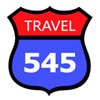Be sure to check out the Best Things to Do in Colonial Williamsburg after reading about the Top 5 Best Historic Trades in Colonial Williamsburg!
*Last updated April 20, 2024
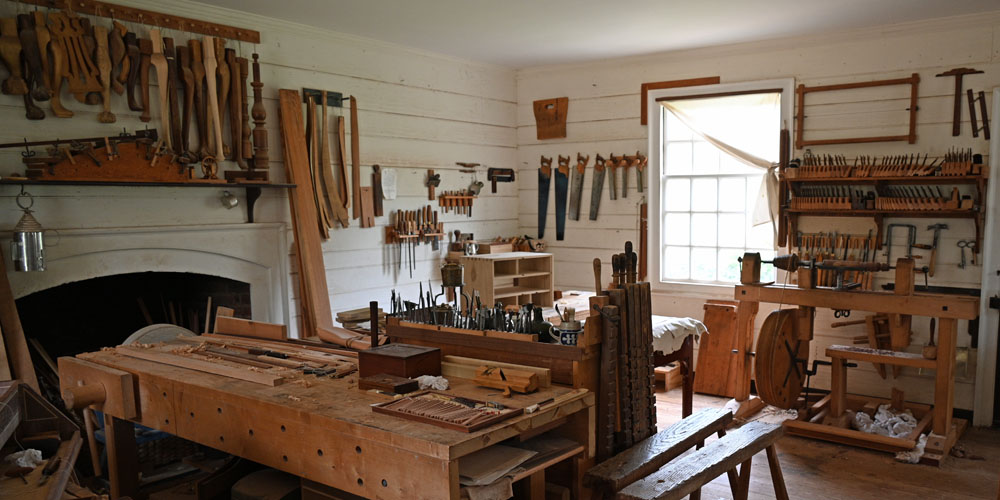
Top 5 Best Historic Trades in Colonial Williamsburg
By “Top 5”, I mean the 5 that I enjoyed the most for our family. Most of the buildings and costumes in Colonial Williamsburg are made on site. Additionally, they use original tools and methods. We made it to 18 of 23 historic trades in Colonial Williamsburg. However, be aware that any trade experience will be influenced by the worker that is there that day and how interesting they are explaining to children. Also, it is easier to interact and ask questions when there isn’t a large group, so if somewhere is really busy, you may want to stop back another time.
#1 – PRINTER
The first amendment of the US constitution: “Congress shall make no law respecting an establishment of religion, or prohibiting the free exercise thereof; or abridging the freedom of speech, or of the press; or the right of the people peaceably to assemble, and to petition the Government for a redress of grievances.”
Learn how the printing press worked and the power it had in colonial times. Also, it was fascinating to learn that of all the thousands of recovered documents, they only found 4 errors! In today’s times, I can usually find 4 errors in a single article.
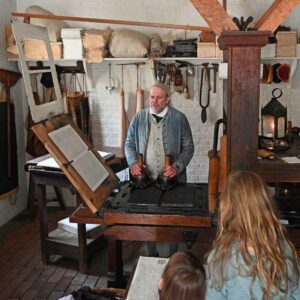
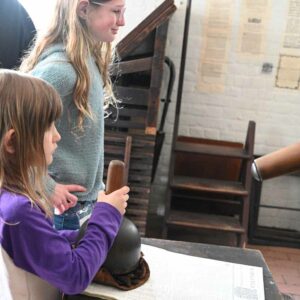
#2 – JOINER
I didn’t know what a joiner was before coming to Williamsburg or how it was different from a carpenter. While a carpenter does more of the rough wood work a joiner “joins” the wood and does the detailing.
Connecting wood in colonial times did not use nails. They used nails for roof shingles and they used wooden pins to connect joints. The speaker was really good and it was interesting to learn about the new building projects going on in Colonial Williamsburg. Additionally, the Bray school is being rebuilt in April 2024.
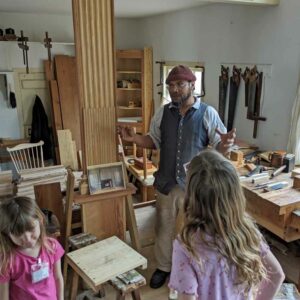

#3 – CABINETMAKER AND HARPSICHORD MAKER
A second “woodworking” trade made the list for me. The cabinetmaker and Harpsichord Maker are a single trade site. I thought the actual building itself was one of the prettier homes, with part of the building bridged over a creek.
Regarding the trade, it was interesting to see the different types of woods and and origins. Additionally, one of the harpsichords is available to be played by the kids. Be sure to ask and make sure which one is okay to play.
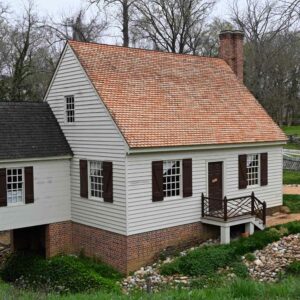
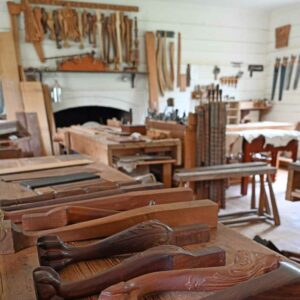
#4 – BLACKSMITH
The blacksmith was neat to see the metalworking in action. Additionally, they have a number of products on display, including nails and tools crafted here. Also, it was interesting to see the giant bellows that is used to get the fire to the temperature required to smelt the metals.
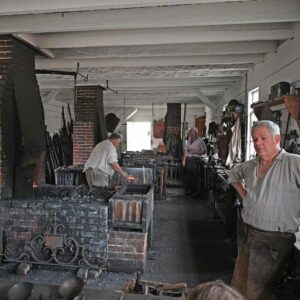
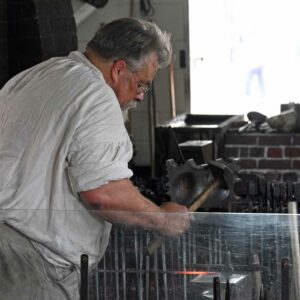
#5 – COOK
The cook is located in the Governors Palace grounds, which makes it easy to visit when you visit the palace. Additionally, we went while they were doing a special presentation on chocolate making and it was really busy! However, It would be good to go when it is less busy to ask questions about the cooking methods used in colonial times.
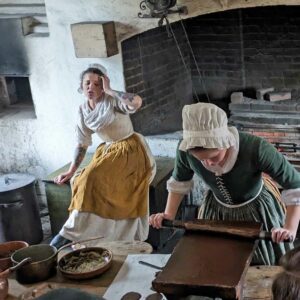
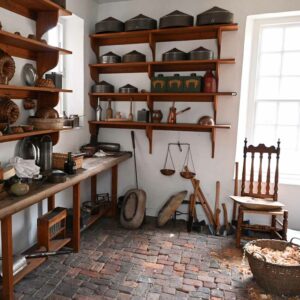
the other Historic Trades
Honestly, we really enjoyed most of the trades, so if there is something that sounds interesting be sure to add it to your list!
APOTHECARY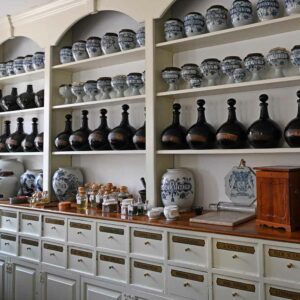
As a chemist by trade, it was fun to visit the apothecary. Also, see all of the strange ingredients used in colonial medicine and learn how different diseases were treated.
BRICKMAKER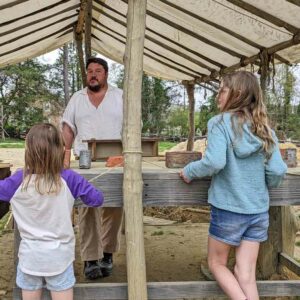
Brickmaker was actually more interesting that I had thought! Also, they have some bricks that are newly made as well as bricks from archaeology digs.
COOPER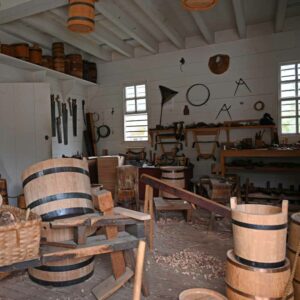
Coopers make barrels, buckets and containers. Additionally, the Cooper is actually located in the backyard of the George Wythe House, so you will have to enter through the home gate to get there.
ENGRAVER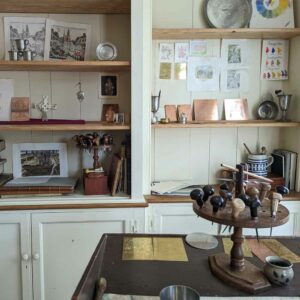
Engraving was important in colonial times to mark a person’s property. Additionally, they have a lot of metal prints that were neat to see.
FOUNDER
Don’t know what a founder is? Neither did we. However, it was fun to learn how a founder cast metals in molds. Additionally, they make things like candle holders and door knobs.
GARDENER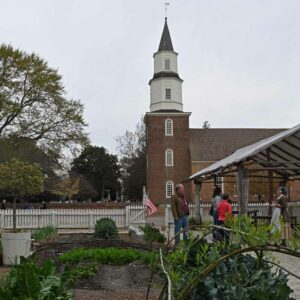
The gardener isn’t quite as exciting as some of the other trades, since it is similar to a current garden. However, it is close to the Bruton Parish Church and easy to visit.
MILLINEr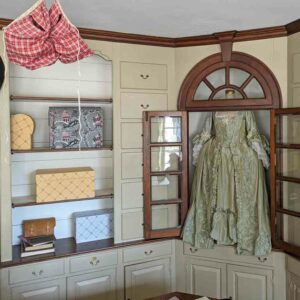
The Milliner and Mantua-maker are a single trade location. A milliner makes hats and a mantua is a fancy dress. Additionally, it was fun to learn about the British fashions popular in the 18th century.
SHOEMAKER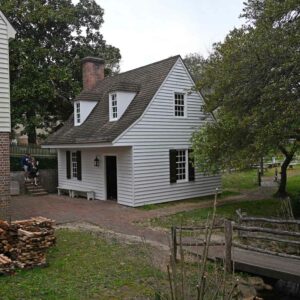
The leather breeches maker and shoemaker are a single trade location. Also, most everything was around shoes and boots while we were there. However, it was fun to see the different types of footwear that were being made.
SILVERSMITH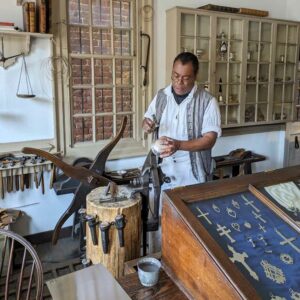
The silversmith was really interesting! He not only discussed silver used in things like jewelry and cutlery, but also coinage and melting silver items.
TAILOR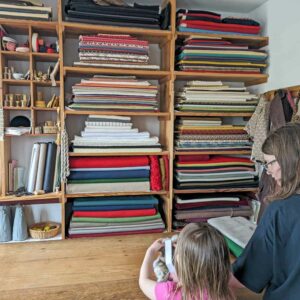
We discussed the differences between the tailor and the mantua-maker. Additionally, it was interesting to hear about the clothing routines of people during that time.
WIGMAKER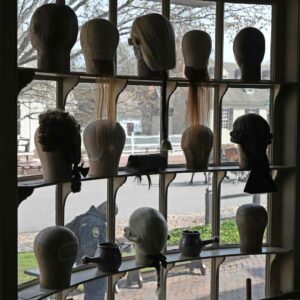
The wigmaker was a unique trade as well. Also, you can learn about the different types of hairs used from horse, sheep and humans! Additionally, back in the day the wigmaker would have served as a barber as well.
The remaining Historic Trades
Listed above are 16 of the 23 trades. However, we also went to the bookbinder and carpenter, but I must have been to into the presentation and did not get a picture. Also, the trades that we missed were Farmer, Gunsmith, Tin Plate Worker, Weaver and Wheelwright. To be honest, I think they all look interesting, so that will give us a few to visit next time.
